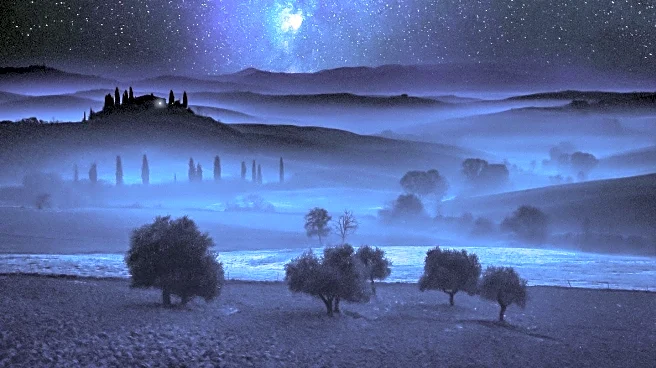Rapid Read • 8 min read
The annual Perseid Meteor Shower is set to peak around August 12 and 13, offering a spectacular display of meteors. This event occurs as Earth crosses the dust cloud from the comet Swift-Tuttle, which orbits the sun every 133 years. Known for its fireballs, the Perseids feature larger explosions of light and color. However, this year's visibility may be compromised by the moon, which is expected to be 84% full, reducing meteor visibility by 75%. The shower is best viewed in the Northern Hemisphere before dawn, with optimal conditions in dark sky areas.
AD
The Perseid Meteor Shower is a significant astronomical event that draws interest from space enthusiasts and the general public alike. It provides an opportunity for people to connect with the natural world and appreciate celestial phenomena. Despite the moonlight challenge, the event encourages outdoor activities and stargazing, promoting awareness of astronomy and science. It also highlights the importance of preserving dark sky areas, which are crucial for observing such events without light pollution.
As the Perseid Meteor Shower peaks, viewers are advised to find locations with minimal light pollution for the best experience. The event may inspire educational programs and community gatherings focused on astronomy. Additionally, other meteor showers like the alpha Capricornids and Southern delta Aquariids are active, offering more opportunities for observation. The ongoing solar maximum period enhances the visibility of other celestial events, such as the northern lights, providing a rich tapestry of astronomical phenomena throughout August.
The Perseid Meteor Shower underscores the cultural and scientific significance of astronomical events. It serves as a reminder of the vastness of space and the intricate movements of celestial bodies. Such events can inspire future generations to pursue careers in science and astronomy, fostering a deeper understanding of the universe. Moreover, they highlight the need for environmental conservation, as light pollution can hinder the ability to observe these natural wonders.
AD
More Stories You Might Enjoy











